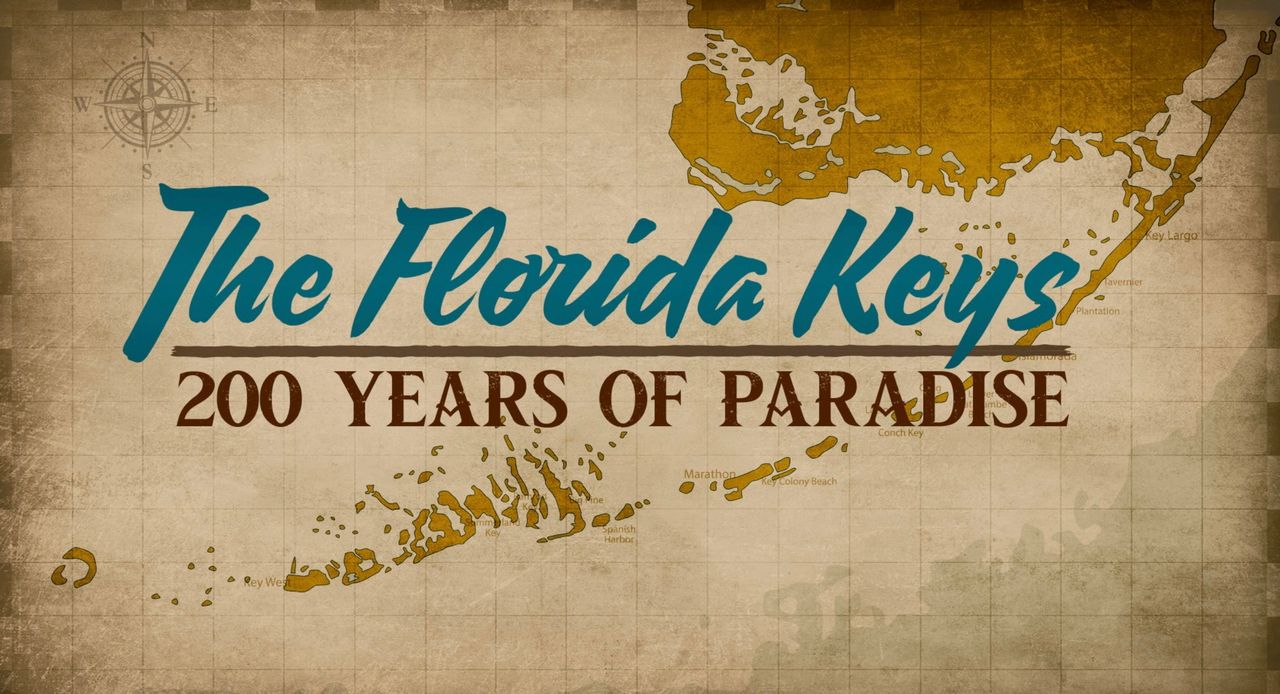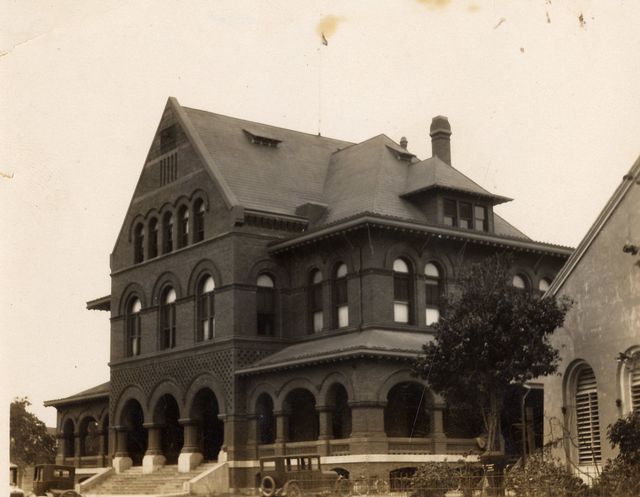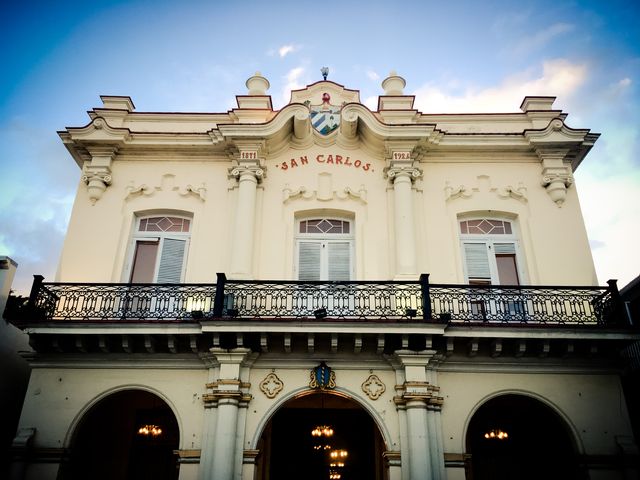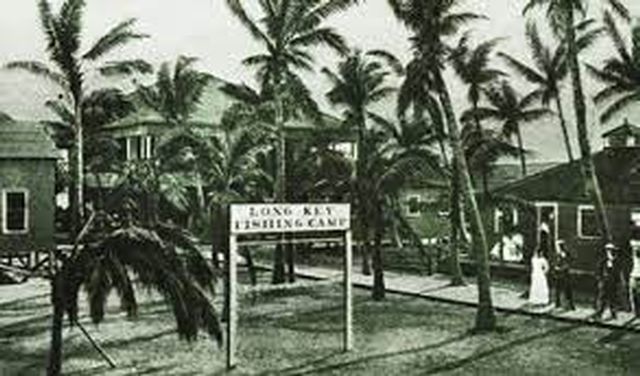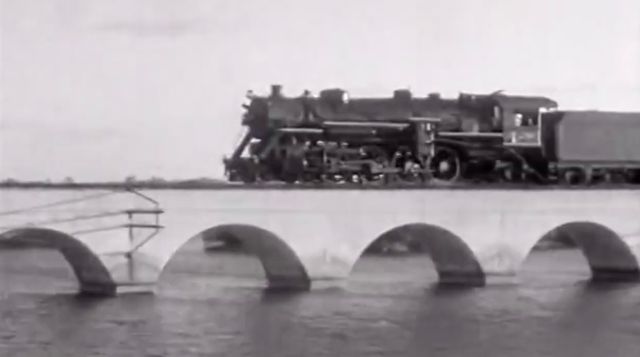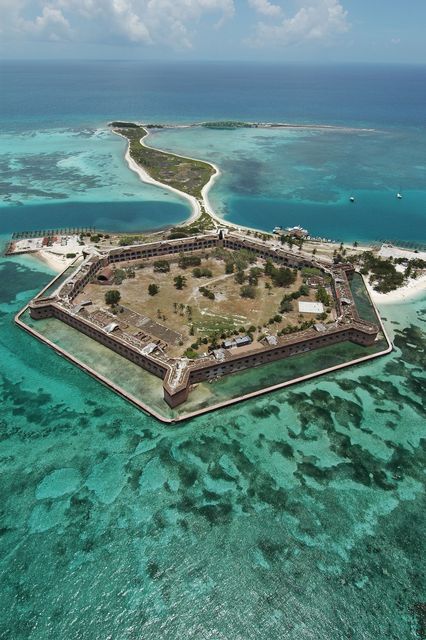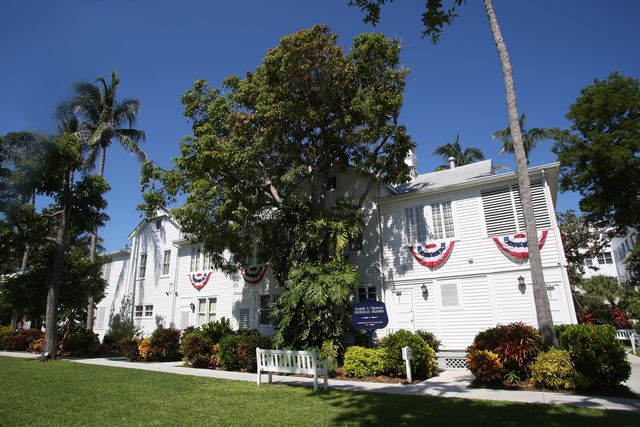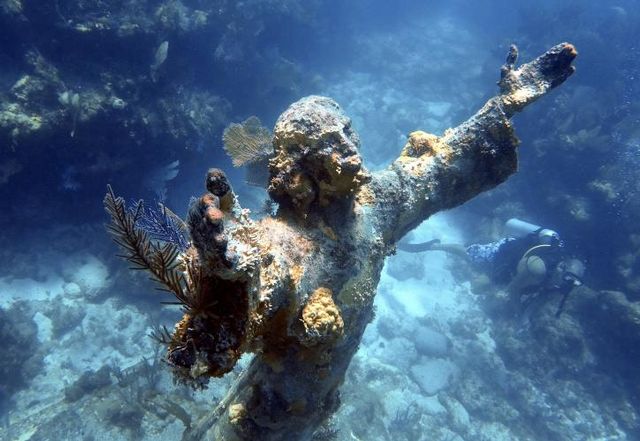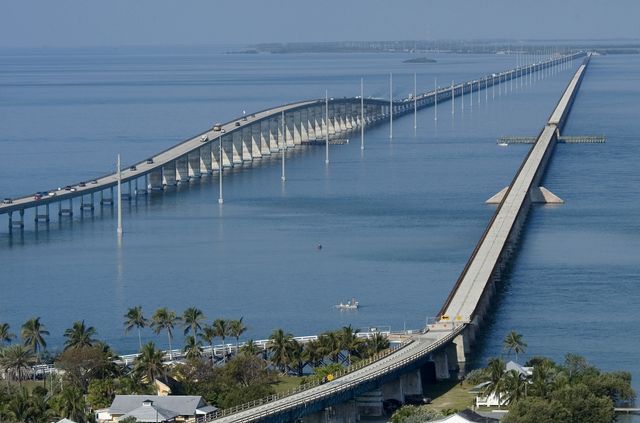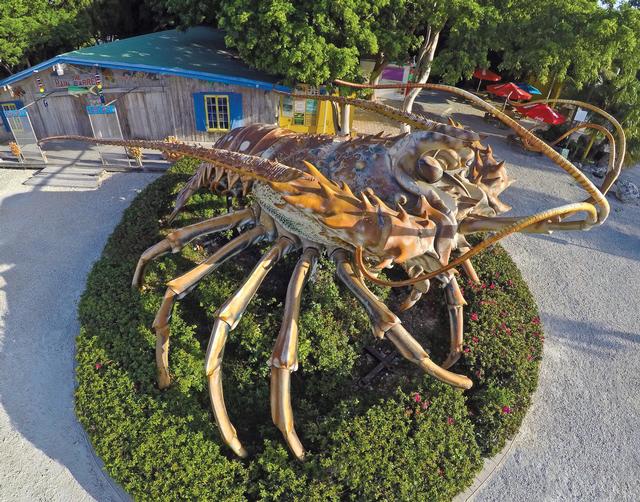FLORIDA KEYS: 200 YEARS OF PARADISE TIMELINE
*Special thanks to Florida Keys historian and author, Brad Bertelli, for assistance with this timeline.
1513: Ponce de Leon sails past the Florida Keys and records them in his travel journals as Las Martires (The Martyrs). The territory was later claimed by Spain.
1815: Don Juan de Estrada grants Key West to Juan Pablo Salas for meritorious service to the crown.
1821: John W. Simonton, from Alabama, purchases Key West from Salas for $2,000. Lt. M.C. Perry of the United States Navy takes possession of the island in 1822 and claims it for the United States as part of the ceded territory from Spain.
1822: Key West is declared an official port of entry to the United States and the first customs house is opened. The first Naval Depot is established soon after and the United States Marine Corp arrives in 1824.
1823: Founding of Monroe County: The Florida Territorial Legislature establishes Monroe County July 3, 1823. Named for James Monroe, the fifth president of the United States, the county includes the islands of the Florida Keys & Key West.
1825: Legislation is passed by the U.S. Congress requiring salvage from shipwrecks in U.S. waters to be brought to an American port of entry.
1828: Key West is officially incorporated after Congress establishes the Superior Court of the Southern Judicial District of Florida. The establishment enables salvage court, previously held in St. Augustine, to be held in Key West. This results in a growing shipwreck salvage industry and increases the population of the island. Key West subsequently becomes the wealthiest city per capita in the young United States from the bounty of wrecking.
1831: A shipwrecked William Wall founds the first cigar factory in Key West. By 1888 the island can claim 166 cigar factories, which produce 100 million stogies per year.
1831: Wrecker Jacob Housman relocates from Key West to Indian Key, a small island off mile marker 78.5 in Islamorada, and begins to further develop the already established small community. Once the Keys’ second-largest community, in 1840 its buildings were burned to the ground during an attack by Spanish and Seminole Indians.
1832: John James Audubon visits Key West. The Audubon House built by wrecker Captain John Huling Geiger, was constructed around 1846-1849. It becomes the Audubon House Museum in 1960.
1846: Construction of Fort Jefferson, named after the third U.S. President Thomas Jefferson, begins on Garden Key in the Dry Tortugas, a cluster of tiny islands 68 miles west of Key West in the Gulf of Mexico. The largest all-masonry fort in the United States, Fort Jefferson serves as a Union military prison during the Civil War. Its most famous prisoner is Dr. Samuel Mudd, convicted of conspiracy in President Abraham Lincoln’s 1865 assassination but later pardoned. During the Spanish-American War, the fort is a supply station for the U.S. Navy.
1848: Key West Lighthouse & Keeper’s Quarters is completed. Beginning in 1848, the lighthouse guides mariners through local waters until it is decommissioned in 1969.
1861: The State of Florida secedes from the Union. Key West remains loyal to the Union, the only Southern city to remain part of the United States during the Civil War.
1871: The San Carlos Institute is founded in Key West to preserve Cuban culture, functioning as a school and cultural center. In a historic 1892 speech from the building’s balcony, Cuban patriot Jose Marti unites the Cuban exile community and launches his drive for Cuba’s independence.
1873: Alligator Reef Lighthouse off Islamorada is built. The lighthouse is named in honor of the U.S.S. Alligator, part of the U.S. Navy’s anti-piracy squadron, that ran aground in 1822. Fully operational from 1873 to 2014, the Alligator Reef Lighthouse is often called the Statue of Liberty of Islamorada and is listed on the National Register of Historic Places.
April 1, 1886: The Great Fire of Key West destroys a significant portion of the island city. Beginning in a coffee shop next to the San Carlos Institute, it burns for 12 hours over 50 acres, destroying most of the city’s commercial area and causing $1.5 million in property damage.
Early 1900s: Western novelist Zane Grey arrives in the Upper Keys and stays at the Long Key Fishing Camp, a resort built by railroad baron Henry Flagler. He reportedly misses only two Keys angling seasons from 1911 through 1926. Grey also co-founds the legendary Long Key Fishing Club and, in a 1919 pamphlet, presents sailfish as a gamefish target for the first time.
1908: President Theodore Roosevelt creates the Key West National Wildlife Refuge to protect and preserve a breeding ground for migratory bird species that were being killed for their colorful feathers. Today the 10-mile by 25-mile refuge, accessible only by boat, provides nesting, roosting and foraging habitat for countless species of migratory birds.
1908: Three years after construction is begun on millionaire Henry Flagler’s Florida Keys Over-Sea Railroad or Florida East Coast Railway’s Key West Extension, a bridge to span the seven-mile stretch of water below Marathon is planned. The first regularly scheduled train travels from Miami to Knight’s Key (Marathon) and the railroad is a half-finished dream.
1916: Marking the completion of Henry Flagler’s Florida Keys Over-Sea Railroad, the first train journeys from mainland Florida to Key West. The railroad connects the previously isolated Keys with each other and the mainland for the first time, and operates until 1935 when it sustains severe hurricane damage.
1927: Pan American World Airways is founded in Key West and begins carrying mail between the island city and Havana, Cuba. Several months later the airline launches passenger service and sells its first tickets from a waterfront building now located at 301 Whitehead St. The building ultimately becomes home to First Flight Key West, a restaurant and brewery that pays homage to Pan Am’s unique history.
1928: Ernest Hemingway first visits Key West, later acquiring a Spanish colonial villa on Whitehead Street where he lives until late 1939. During his residence, he pens literary classics including “Death in the Afternoon,” “For Whom the Bell Tolls” and “The Snows of Kilimanjaro.” Depression-era Key West becomes the setting for “To Have and Have Not” — one of just two Hemingway novels set in the United States.
1928: On January 25, 1928, the first version of State Road 4A, also known as the Florida Keys Overseas Highway, opens to public traffic.
1929: Lower Keys landowner Richter Clyde Perky completes the Bat Tower at mile marker 17, supposedly to house bats to eat the mosquitoes plaguing his fishing resort. The 30-foot-tall unpainted tower reportedly costs nearly $10,000 but is never adopted by bats. The strange, shingled tower remains a local landmark for decades.
1934-35: In the mid-1930s, when the Great Depression has devastated the Florida Keys and much of the United States, the federal Works Progress Administration sends artists and writers to Key West to paint murals, write guidebooks and teach craft classes to help revitalize the economy.
1935: Fort Jefferson National Monument is designated by President Franklin D. Roosevelt under the Antiquities Act, and in 1992 the area is re-designated Dry Tortugas National Park by an act of Congress. Lying 68 miles west of Key West in the Gulf of Mexico, the park includes seven tiny coral-and-sand islands, with historic Fort Jefferson located on the 22-acre Garden Key. Secluded and pristine, Dry Tortugas remains one of the United States’ most remote national parks.
1938: The Florida Keys Overseas Highway officially opens July 2 as the highway route throughout the Keys.
1938: The Great White Heron National Wildlife Refuge is established to provide safe nesting and breeding areas for North America’s largest wading bird and other migratory birds and wildlife. Stretching between Key West and Marathon, the refuge features almost 200,000 acres of open water and islands in the Gulf of Mexico.
1938-1946: Poet Elizabeth Bishop owns a home on Key West’s White Street, and is inspired to write many of the poems for her pivotal first book, “North & South,” during her time on the island. She later wins both a Pulitzer Prize and National Book Award, and becomes the U.S. Poet Laureate in 1949-50.
1938-1954: Pigeon Key, a 5-acre island lying beneath the Old Seven Mile Bridge in the Middle Keys, becomes the home of the Florida Road and Toll Bridge District. The tiny island, an early 1900s base camp for workers constructing the bridge for the Florida Keys Over-Sea Railroad, later is designated a National Historic Landmark.
1941: Internationally renowned playwright Tennessee Williams first visits Key West and subsequently returns several times, completing “Summer and Smoke” on the island in 1946. In 1949 he purchases the unpretentious Key West house that becomes his home for the rest of his life. A Key West museum is later established to honor his legacy.
1945-1953: Harry S. Truman spends 11 working vacations — nearly six months of his presidency — at the Key West residence that becomes known worldwide as his Little White House. Today the carefully restored Little White House is open to visitors as Florida’s only presidential museum.
1955: Grimal Grove is established on Big Pine Key, designed by reclusive engineering genius Adolf Grimal. Grimal carved freshwater ways, ponds, cisterns, built raised garden beds and formed a lush tropical garden from limestone rock with his bare hands. Decades later, the property is restored as a tropical fruit park billed as the continental United States’ first and only breadfruit grove.
1957: The Lower Keys’ National Key Deer Refuge is established to protect and preserve habitats for wildlife, most notably the diminutive Key deer that range in size from 45 to 80 pounds fully grown. Since then the Key deer population, once nearing extinction because of over-hunting and habitat loss, has rebounded to between 600 and 700 animals.
1957: Former President Herbert Hoover comes to Key West aboard the 98-foot yacht Genie. An annual visitor to the Key Largo Anglers Club, Hoover and his party decide to try fishing in Marathon and Key West.
1960: John Pennekamp Coral Reef State Park is created off Key Largo. The first undersea park in the United States, the park encompasses approximately 70 nautical square miles. It’s named after John Pennekamp, a Miami Herald newspaper associate editor and columnist who also helped to create Everglades National Park.
1969: Long Key State Park opens. The property previously was a depot for the Florida Keys Over-Sea Railroad and the site of railroad magnate Henry Flagler’s Long Key Fishing Camp, a resort that attracted saltwater fishermen from around the world.
1970s: The rum runner is first introduced sometime in the 1950s, created at Holiday Isle, a Tiki bar in Islamorada. Like many a tropical cocktail, it incorporates rum, banana liqueur and grenadine. Its name is a tribute to the many rum runners who frequented the area during Prohibition, bringing rum from Havana to the mainland.
1982: In protest against a Border Patrol roadblock set up at the head of the Florida Keys, blocking access on the only road in and out of the island chain, the Keys stage a "secession" from the United States — and the Conch Republic is born. Conch Republic organizers declare war on the mother country, employ loaves of stale Cuban bread as weapons, surrender after 60 seconds and request $1 billion in foreign aid. The foreign aid has not yet arrived.
1982: The new Seven Mile Bridge is completed. A footrace across the new bridge is staged to commemorate the completion of the federally funded bridge-building program that replaced spans constructed in the early 1900s as part of the Florida Keys Over-sea Railroad. The Seven Mile Bridge Run continues to be staged each April, attracting runners from around the world.
1983: The Key West Literary Seminar is established s to honor the island’s rich literary culture and place as home to some of America’s most celebrated authors. . The seminar is subsequently staged annually, exploring a different literary theme each year and featuring presentations by leading contemporary authors from the United States and beyond.
1985: After a 16-year search, treasure salvor Mel Fisher and his crew of salvage divers discover the $500 million treasure of the sunken 1622 Spanish galleon Nuestra Señora de Atocha in the waters off Key West. The galleon's sterncastle, postulated to contain an equivalent amount of artifacts and treasure, remains undiscovered. Scores of recovered artifacts and treasures are displayed at the Mel Fisher Maritime Museum.
1990: The Florida Keys National Marine Sanctuary, widely regarded as a national treasure, is established by the United States government. The sanctuary surrounds the entire land mass of the Florida Keys and protects some 3,800 square miles of coastal and oceanic waters and submerged lands, including the continental United States’ only living coral barrier reef.
1998: Wreck diving comes to the Lower Keys in a big way with the intentional sinking of the 210-foot Adolphus Busch Sr. The former island freighter is sunk perfectly upright and intact in 100 feet of water some 7 miles southwest of Big Pine Key. A wide variety of marine life comes to call the wreck home.
2000: One Human Family is unanimously adopted by the Key West City Commission as the city’s official philosophy — and later is adopted for the entire Florida Keys — expressing the island chain’s openness and acceptance. Launched by local graphic designer J.T. Thompson, who printed bumper stickers that read “All people are created equal members of ONE HUMAN FAMILY,” the One Human Family movement later grows to be recognized around the globe.
2000: Islamorada’s History of Diving Museum is incorporated in 2000 and opens to the public on a part-time basis in September 2005. The museum begins full-time operation in September 2006, featuring one of the world's largest and most comprehensive collections of diving artifacts.
2002: The 510-foot-long Navy landing ship dock Spiegel Grove is sunk about 6miles off Key Largo in about 130 feet of water, becoming one of the largest ships ever intentionally sunk as an artificial reef for divers. It attracts legions of fish and other Keys marine life that can be viewed by scuba divers with advanced diving experience.
2003: A 1.25-mile-long rainbow flag is unfurled along the length of Duval Street from the Gulf of Mexico to the Atlantic Ocean during Key West’s 2003 Pride celebration. The banner was constructed on the island by Gilbert Baker, who created the original rainbow flag, to mark its 25th anniversary. Sections of the Key West flag are later displayed at Pride events worldwide.
2009: The Florida Keys Overseas Highway is named an All-American Road, the highest designation a United States roadway can earn, under the National Scenic Byways program. Designation reflects a roadway’s cultural, historic, natural, recreational and scenic qualities that make it nationally significant.
2009: The USNS Gen. Hoyt S. Vandenberg is purposely sunk in nearly 150 feet of water off Key West to become an artificial reef. The 523-foot-long ship is the second largest vessel in the world scuttled to become an artificial reef.
2009: Betsy, a 30-foot-tall, 40-foot-long Florida Keys spiny lobster sculpture, is moved to the Rain Barrel Artists Village in Islamorada. Crafted in the 1980s by artist Richard Blaes, Betsy is now a much-photographed icon that greets visitors to the Rain Barrel arts enclave.
2011: The Morada Way Arts & Cultural District is established in Islamorada, encompassing the art galleries and restaurants on Morada Way between mile markers 81 and 82. As well as welcoming visitors throughout the year, the popular arts district is the site of the Third Thursday Art Walk each month that features fine art, live music and culinary offerings.
2013: The Florida Keys History & Discovery Center is established on the grounds of Islamorada’s Islander Resort. The facility is home to exhibits that highlight the rich history of the Florida Keys, especially the history and unique ecological features of the Upper Keys. Additional rotating exhibitions explore aspects of the region’s nature, art or heritage.
2013: On Sept. 2, 64-year-old Diana Nyad becomes the first person to swim from Cuba to Florida without the use of a shark cage for protection. Nyad completes the 111-mile swim from Havana to Key West on her fifth attempt, in approximately 53 hours. Nearly 2,000 people greet her with loud cheers and applause as she comes ashore on Smathers Beach.
2015: Bloodline Premieres on Netflix: “Bloodline,” an original on-demand television series that showcases the Florida Keys, premieres March 20. The psychological thriller is filmed at various Keys locations, primarily in the Upper Keys between Key Largo and Islamorada. Stars of the show include Oscar winner Sissy Spacek, Emmy winner Kyle Chandler, “ER” veteran Linda Cardellini and noted Australian actor Ben Mendelsohn. In addition to scenic aerials of Keys bridges and dense mangrove forests offshore, featured Upper Keys landmarks include Pierre’s Restaurant, The Moorings Village, the beach at Founders Park and other popular places like the Green Turtle Inn and the Oceanview Pub.
2021: Secretary of the Interior Deb Haaland approves a recommendation from the National Park Service that the Friends of the Pool, Inc., be granted ownership of the Upper Keys’ Alligator Reef Lighthouse under the National Historic Lighthouse Preservation Act. The nonprofit organization, host of an annual 8-mile roundtrip swimming race to the lighthouse that funds collegiate scholarships, is committed to restoring the lighthouse to its original glory.
2022: The oft-photographed 2.2-mile span of the Old Seven Mile Bridge that serves as the gateway to Pigeon Key reopens to pedestrian recreation in January after a multi-year restoration. The $44 million renovation is part of a 30-year, $77 million agreement between the Keys' Monroe County, Marathon municipal officials and the Florida Department of Transportation to fund restoration and maintenance to ensure the landmark's preservation.
2022: The 200th anniversary of Key West’s first permanent settlement is highlighted by a celebration commemorating the date of March 25, 1822, when U.S. Navy Lt. Matthew Perry planted the American flag on island soil. Ordered by the Navy, Perry arrived to physically claim the Florida Keys as U.S. territory.
The first train on Henry Flagler's Florida Keys Over-Sea Railroad journeys from mainland Florida to Key West on Jan. 22, 1912
Fort Jefferson is located in what is now Dry Tortugas National Park, located 68 miles west of Key West. Photo: Andy Newman
Harry S. Truman spent 11 working vacations at the residence that becomes known worldwide as the Little White House. Photo: Carol Tedesco
The Christ of the Deep statue within John Pennekamp Coral Reef State Park is a draw for divers and snorkelers from around the world. Photo: Jesus Ampueda
The new Seven Mile Bridge opened in 1982 to the left of the Old Seven Mile Bridge first constructed as part of the Florida Keys Over-Sea Railroad. Photo: Andy Newman
The History of Diving Museum contains one of the largest and most comprehensive collections of diving artifacts.
Betsy is a 30-foot-tall, 40-foot-long Florida Keys spiny lobster sculpture that was moved to its current home at the Rain Barrel Village in 2009. Photo: Bob Care


